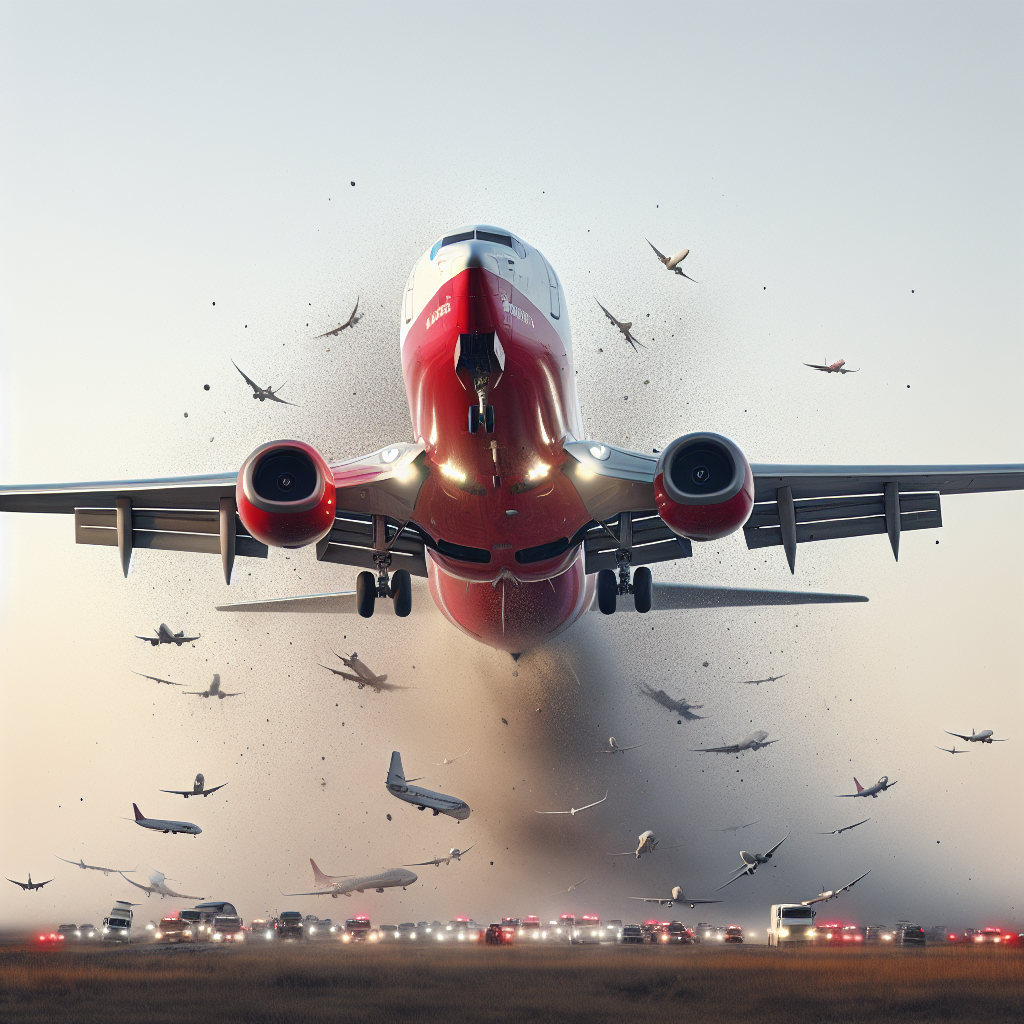A Chilling Recurrence in the Skies
Just one day after a catastrophic Boeing 787 Dreamliner crash claimed over 260 lives, Air India found itself facing a terrifying in-flight emergency that forced one of its aircrafts to make an unexpected landing. The event has rattled the aviation industry, travelers, and global regulators already on edge from the tragedy that shook the world.
Emergency Landing Sends Shockwaves Through Air Travel
On Friday, an Air India flight en route to Frankfurt from Delhi was forced to make an emergency landing due to a yet-unconfirmed technical fault. According to reports, the aircraft began experiencing “serious operational issues mid-air,” prompting the pilots to initiate emergency protocols and land at Istanbul’s airport.
Although the decision to land was executed safely and no injuries were reported among the crew or the passengers, the incident raised immediate alarms given the grim context—just 24 hours after the devastating Dreamliner crash.
Aviation on High Alert
The proximity of the emergency to Thursday’s fatal crash has intensified concerns about aviation safety. While it remains unclear whether there’s any direct link between the Dreamliner disaster and the Air India emergency, industry experts are calling for a sweeping investigation into Boeing aircraft operations around the globe.
Key points fueling growing concern:
- The Boeing 787 Dreamliner has a well-documented history of technical issues, ranging from lithium-ion battery failures to engine malfunctions.
- This latest string of incidents may indicate broader systemic issues in maintenance and aircraft manufacturing quality control.
- Airlines are reviewing contingency flight plans and bolstering onboard safety measures in response to growing customer unease.
Boeing’s Turbulent Track Record
Boeing, once the undisputed vanguard of aerospace innovation, has seen its reputation battered in recent years. From the two high-profile 737 MAX crashes in 2018 and 2019 to ongoing delivery delays and production concerns, Boeing’s credibility continues to be tested.
The fact that Thursday’s crash also involved a Boeing 787 increases scrutiny exponentially. Investigators are now probing whether a deeper design flaw or software glitch played a role in the aircraft’s catastrophic failure.
Passenger Anxiety Reaches a Boiling Point
For travelers, these back-to-back incidents are more than cautionary tales—they’re reason enough to reconsider upcoming flights. Social media platforms were flooded on Friday with expressions of fear and frustration from ticket holders, especially those scheduled to fly on Dreamliner routes.
“Our flight to London is on a Dreamliner next week, and after hearing this, I’m having second thoughts,” one passenger tweeted.
Air India Responds to the Crisis
Air India issued a statement assuring the public that passenger safety remains its top priority. The airline confirmed that the aircraft involved in the Friday emergency has been grounded for full technical evaluation.
“We followed standard operational protocols, and we commend our crew for their professionalism. We are working closely with aviation authorities to ensure comprehensive checks on the aircraft,” the airline reiterated.
Global Regulators Step In
In the wake of these developments, aviation regulators including the FAA and EASA have begun coordinating efforts to reevaluate the Dreamliner’s certification and maintenance protocols. Although they have not issued a grounding order, a precautionary advisory regarding extended flight-range routes could be imminent.
Steps currently being taken include:
- Enhanced oversight of existing Dreamliner fleets
- Scheduled mid-cycle maintenance inspections by third-party evaluators
- Long-term audit of Boeing’s production and quality assurance process
Looking Ahead: What This Means for the Aviation Industry
These recent developments highlight a pivotal moment for the aviation sector. With consumer trust on the line and regulatory pressure building, both aircraft manufacturers and airlines are expected to respond with sweeping reforms.
Rebuilding public confidence will not happen overnight, but transparency, accountability, and innovative safety enhancements will be key steps in regaining traveler loyalty.
Travelers Urged to Stay Informed
As investigations continue, flight passengers are encouraged to stay informed by regularly checking airline and aviation authority updates. A global climate of air safety vigilance may well usher in a new era of stricter compliance and technological upgrade across commercial fleets.
Conclusion
The emergency landing of an Air India flight—occurring just a day after a deadly Boeing 787 crash—has cast a long shadow over an industry already in crisis. As we await full reports and regulatory responses, one thing is clear: the conversation about aircraft safety has reignited, and its implications will echo far beyond the runway.



Leave a Reply